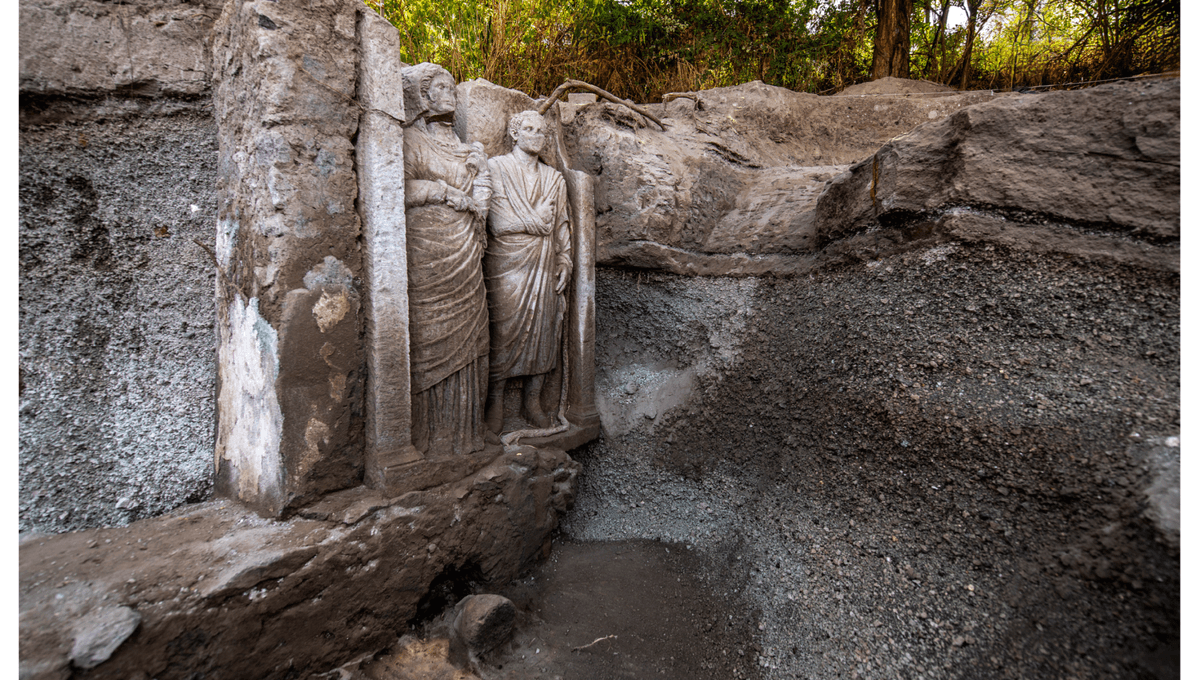
A tomb discovered within an elite necropolis in Pompeii has been identified as the final resting place of an ancient priestess who may have served the fertility goddess Ceres. According to archaeologists, this is the first grave ever to be connected to the cult of Ceres in the doomed city, and the woman whose ashes it houses probably held a position of social and political elevation.
Found in the funerary complex of Porta Sarno – which served as a burial ground for Pompeii’s upper classes until the city’s annihilation in 79 CE – the tomb features a lavish relief depicting a young bride and groom. “These statues and the rest of the tomb would have been of enormous cost, only within the reach of wealthy and influential women and men,” write the authors of a new study.
Of particular interest is the lifesize, veiled female statue, who the researchers say adheres to the image “of the reserved, demure, and honest woman.” More importantly, however, she also appears to be holding an asperigillum, which was a laurel branch “used by priests and priestesses to purify and bless spaces by dispersing the smoke of incense or other aromatic herbs burned during religious ceremonies.”
In addition to this, the woman is depicted wearing a necklace featuring an amulet in the shape of a crescent Moon, known as a lunula. Typically, lunulae were worn by young unmarried girls, and brides would not have used this piece of jewelry on their wedding day. The presence of the lunula on the statue may therefore indicate a special connection between this particular woman and Ceres, who was strongly associated with the phases of the Moon due to their relevance to agriculture and the harvest.
As such, the study authors propose that the symbolism surrounding the bride “may identify her as a priestess of Ceres.” Unfortunately, however, because no inscription was found accompanying the relief, it is not possible to confirm the identity of either the woman or her husband.
“The sculpture of the woman is one of the rare examples of a priestess being depicted with the objects characteristic of their religious position and the only one known so far in Pompeii,” write the researchers. “Being a priestess was the highest social rank to which a woman could aspire. Priestesses had an important role in the public sphere. They had a position of power that was far removed from other women and very similar to that of male priests,” they add.
That being the case, this discovery adds significantly to our understanding of the social, religious, and political reality of Pompeii immediately before its apocalyptic demise, indicating that the cult of Ceres was observed in the ancient city and that elite women were able to serve as priestesses.
The study has been published in the journal Heritage.
Source Link: Tomb Of Roman Priestess Of The Goddess Ceres Found At Pompeii